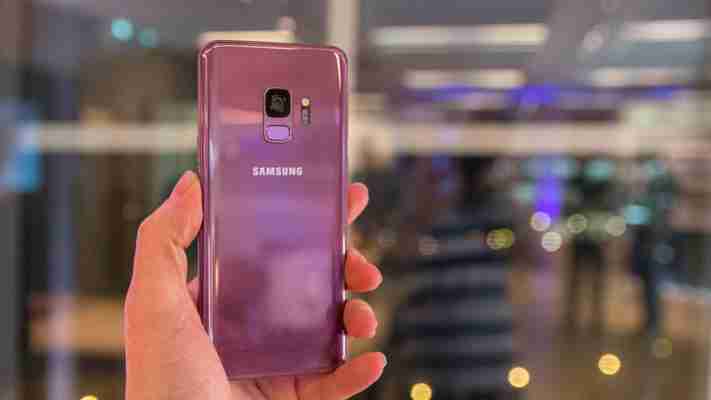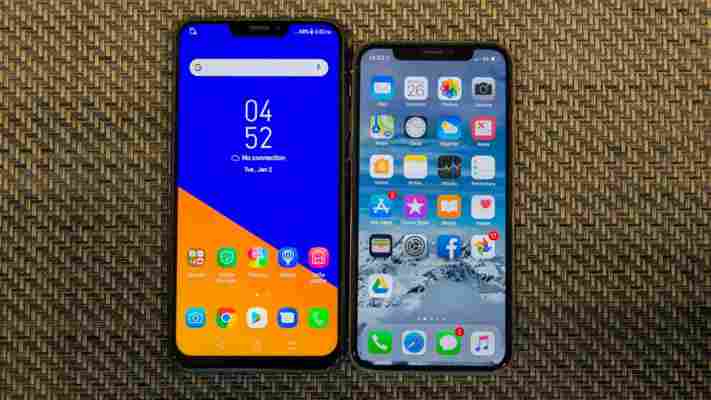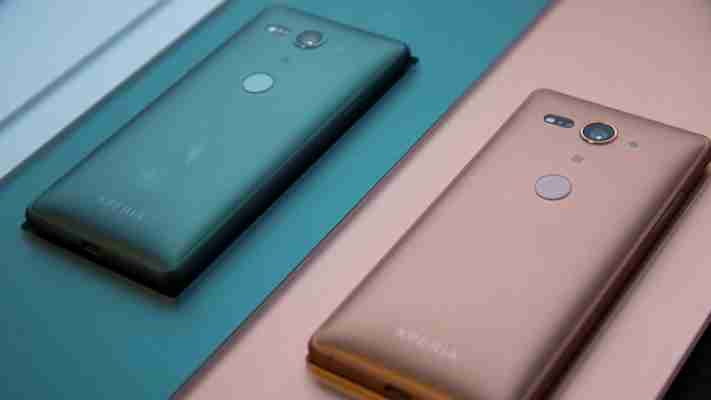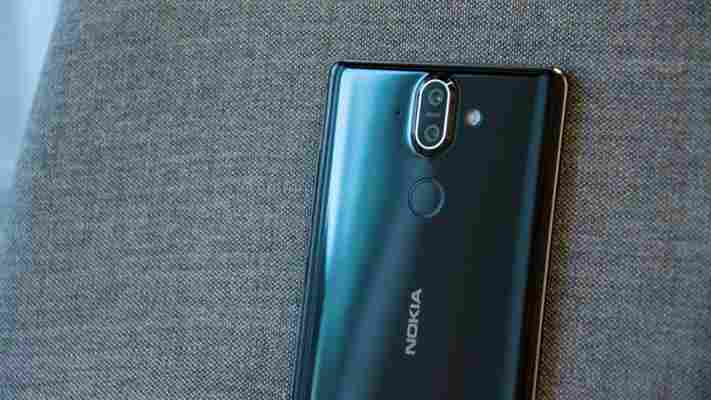Mobile World Congress (MWC) took place between 26 February and 1 March 2018 in Barcelona. Here, we've summarised the very best launches that took place at the conference. Where possible, we'll be sure to link out to wider hands-on reviews of the respective devices.
MWC 2018 is all about mobile technology. While smartphones are always the big-hitters, other interesting products such as tablets and smartwatches are also on show, as well as plenty of enterprise equipment.
Samsung unveils the Galaxy S9 and S9 Plus

The Samsung Galaxy S9 and S9 Plus are finally official. Looking a lot like last year’s S8 from the outside, the newest Samsung flagship features the new Qualcomm Snapdragon 845 processor and some big advancements to the camera technology inside – as well as a fetching new purple colour scheme for those bored of black and blue. Preorders opened on 25 February , and you’ll have the phone in your hands on 16 March 2018.
You can read our impressions of the S9 here , and the larger S9 Plus here .
Asus releases an iPhone X-like notch phone

Asus has surprised a few of us by releasing two new phones – the ZenFone 5 and ZenFone 5Z. Both phones have a large 6.2in FHD+ display, a 12-megapixel shooter and an 8-megapixel selfie camera, but differ internally. The ZenFone 5 is powered by a Snapdragon 636 with 6GB of RAM, and has 64GB of storage, while the 5Z has a more powerful Snapdragon 845 with 8GB of RAM and a huge 128GB capacity.
Arguably the most eye-catching feature of both phones is their display. Utilising the full screen, Asus has opted for an iPhone-like notch.
Read more about the ZenFone 5Z here , and the regular version on Alphr - our sister publication
Sony treats us to two new flagship devices: the Xperia XZ2 and XZ2 Compact

Fresh off the back of releasing the excellent XA2 and XA2 Ultra – two phones that deserve to take the midrange by storm – Sony is back with plans to take on Samsung and Apple at the flagship end. The phones to do so? The Xperia XZ2 and XZ2 Compact.
The former is the larger of the two, as you’d expect: 5.7in with an 18:9, 2,160 x 1,080 display, Snapdragon 845 processor, 4GB of RAM and a 19-megapixel camera, capable of shooting 4K HDR video and HD slow-motion video of an impressive 960fps. The dinkier XZ2 Compact offers identical innards in a more pocket-friendly package: it keeps the 18:9 aspect ratio, but packs it into a 5in device. Both handsets are due to launch in April.
You can read our hands-on review of the Xperia XZ2 here , and the smaller Xperia XZ2 Compact here .
Nokia returns with five handsets
Nokia has just unveiled an impressive five new handsets, all launching this year.

The Nokia 8 Sirocco is the star of the show here. It’s a 5.5in device, sporting a 2K 18:9 display. Spec-wise, however, it’s a mixed bag for the €749 (~£660) asking price: while it comes with 6GB of RAM and 128GB of internal storage, it is powered by the Snapdragon 835. That’s certainly no slouch, but it’s the processor of last year’s flagship devices and could leave the Sirocco a little exposed in the sales wars to follow. You can read our full hands-on review here .
Elsewhere, the Finnish company has announced the Nokia 7 Plus, an updated version of last year’s Nokia 6 and the Nokia 1 – which costs just $85 and is aimed at emerging markets. One handset remains: the 8110, a feature phone in the mould of last year’s surprise success, the 3310. You can read about all these new phones in more detail here .
Huawei launches three tablets and a laptop
Huawei has also released its own share of announcements. No phones, as rumoured, but three tablets and a laptop.
The Matebook X Pro is the star of the lineup: a 14in Windows 10 machine that's the closest we’ve come to a bezel-free laptop. It’s a beautiful, powerful device with i7 and i5 configurations, and you can read more about it here .
The tablets are the latest members of the MediaPad family and come in two sizes: 8.4in or 10.8in. There are two versions of the larger model because one is the MediaPad M5 Pro, which comes with an M-Pen stylus (with 4,096 levels of pressure sensitivity) and the potential to run in a “Windows S environment” when connected to the optional keyboard dock. You can read our hands-on review of the Matebook X Pro here .
LG brings out the V30S ThinQ
Unlike last year's MWC, LG has kept it rather low-key at this year's conference. The Korean manufacturer has announced its new LG V30S ThinQ. Following on from the company's announcement of the original V30 in August 2017, the revised variant now features an AI chip, 2GB of extra RAM (up to a total of 6GB), and more internal storage space up from 64/128GB to 128/256GB.
You can read our hands-on review of the original V30 here.
Lenovo updates its Yoga range and adds a new Moto Mod
Lenovo has launched two new laptops, the Yoga 730 (13in and 15in), and the 14in Yoga 530. Both laptops aim to make the Windows 10 experience even more integrated with Microsoft's AI assistant Cortana. The company also released its Chromebook series: 500e, 300e and 100e to the market.
As for its phones, it launched the Motorola Health Mod, which clips onto the Moto Z to measure your heart rate, blood pressure and temperature among other things. However, it hasn't received any accreditation, so it's not yet to be fully trusted for medical purposes.
Alcatel bolsters its smartphone collection
Known for its budget phones, Alcatel has added a few phones to its repertoire. The Alcatel 5 is a bezel-less phone with an 18:9 5.7in display; the Alcatel 3 is its smaller sibling at 5.5in; and the Alcatel 3V has a 2K display with slightly lower specs. Finally, there's the Alcatel 1X, the cheapest phone in the range, which has a quad-core processor and an 8-megapixel rear-facing camera.
Land Rover launches a rugged phone
Land Rover, the car company, has officially entered the phone market. Much like its 4x4 drive vehicles, the Explore is an all-weather, all-terrain smartphone. The phone is somewhat reminiscent of the Doro 8030 and Moto Z – it features a similar form factor, while also having modular compatibility. It's equipped a 5in screen and a 4,000mAh battery, and it runs on Android.
Read more about the Explore on our sister publication, Alphr.
BMW wants to use your smartphone as a car key
Using your phone's credentials is already a secure way of accessing heaps of information. BMW wants to now use a smartphone to unlock, drive and even share your key with family and friends. This has been previously done by the likes of Tesla before, but it's still good to see it being included in other cars, too. Only select models, such as the i3 electric car, will gain this functionality.
Ford and Waze combine to bring better in-car navigation
At MWC this year, Ford has announced it will be integrating Waze navigation into its Sync 3 platform globally. Available in select cars, the platform allows iOS users to plug their phones into the car's USB port and utilise Waze's navigation system.











